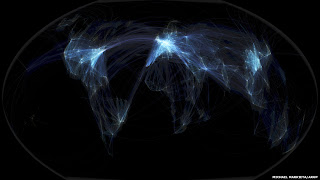I came across an interesting section relating to
globalisation in Reflective Teaching and
Learning in the Secondary School (edited by Sue Dymoke). This post is
centred on a section which can be found on pages 270-271 and is about teaching
in a globalised society.
As beginning
teachers entering the profession in the early years of the twenty-first
century, you may be teaching students who will live to see the twenty-second
century. It is not hard to imagine that their world will be very different from
the one we know today. If the trends of the last century are to continue, we
will see a continuation of the progressive globalisation of recent decades.
Globalisation is often narrowly defined as the interrelationship and
interdependence of economies, the transfer of power from nation states to
transnational corporations, yet it is a much broader political, technological
and cultural phenomenon as well. In this era of profound social change, global
and citizenship education play a vital role in developing the strong civil societies
that could ensure that globalisation becomes a force for global sustainability
and survival.
This section of the book goes beyond curriculum content
and introduces activities which encourage new teachers to reflect on their own
role, drawing upon the qualities of the ‘global teacher’. Teaching is thought
to be a vital step in preparing students for living in a globalised world.
Pupils could also be asked to think of the products and services they use which
are a result of a globalised world. The teacher could then discuss some of the
more complex things that pupils may not have thought of or that are not as
obvious.








